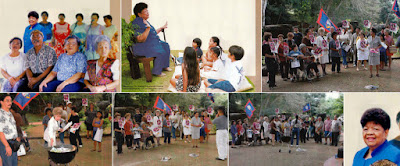Guam: The Movie

During the pandemic lockdown on Guam, I was feeling at various points, like so many, stressed and anxious about the world and what was happening and what might happen. I was fortunate to still have a job during the lockdown, and because of technology like zoom and social media, I could still keep up my community work, by teaching classes in the Chamoru language and also history. I also was able to keep up with Fanachu! the podcast for Independent Guåhan. Because of so many people sheltering at home, our audience grew exponentially. One thing that I found myself doing more, like most people with a certain level of privilege and comfort, was watching more things online, on laptops and on my phones. Movie theaters were closed, but Netflix and Youtube were always open, so long as I had data on my phone and wifi in the home. As most people were locked down, sheltering in place, only encouraged to go out and explore for essential tasks or errands, things in general started to shift to becomi

